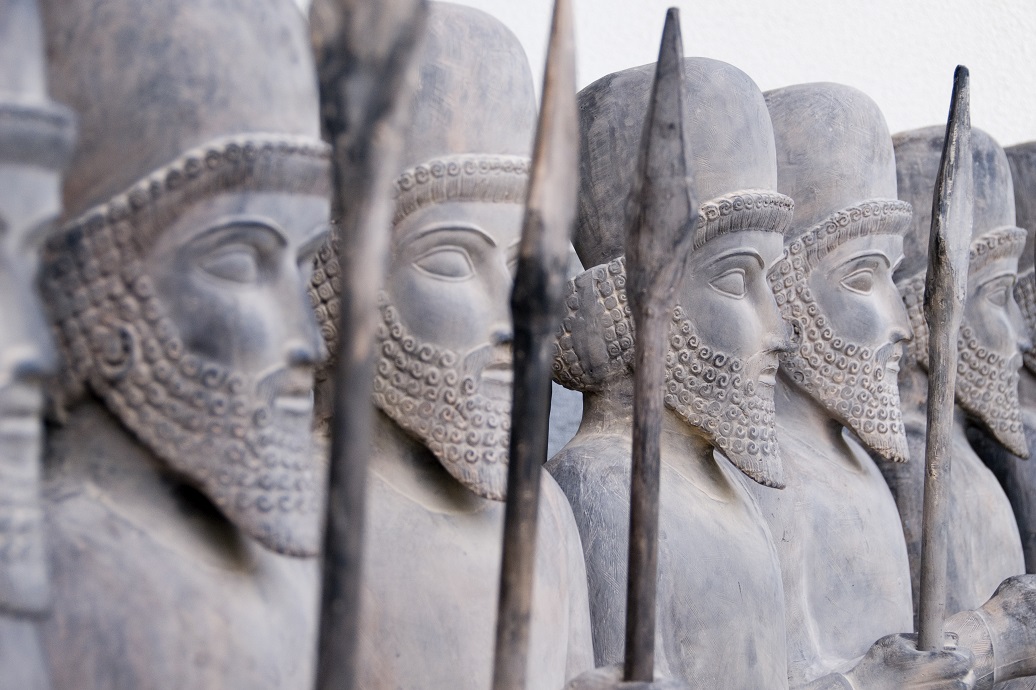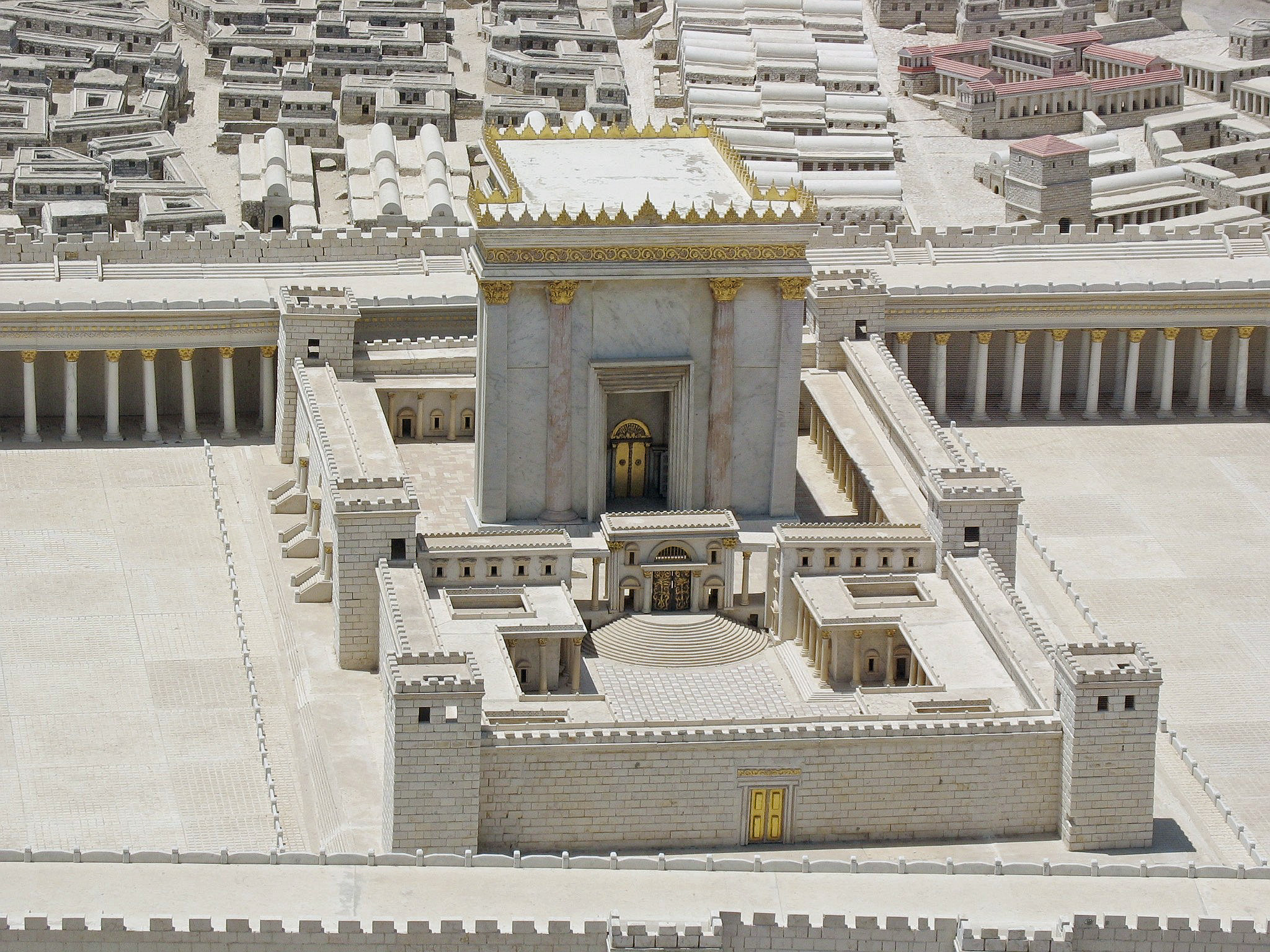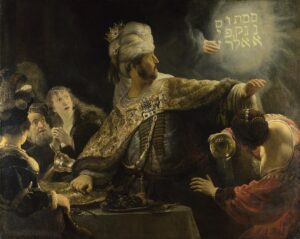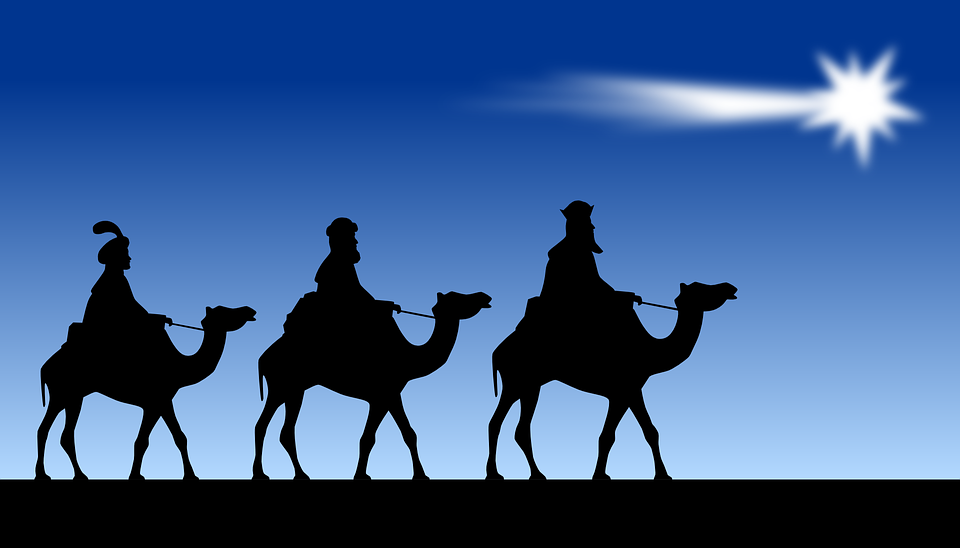40. Home of the People
The main tactic used by Cyrus the Great in taking Babylon was strategic propaganda, as he subverted the reigning King of Babylonia by appealing directly to the people.
39. Diversity Is Key
In addition to being the largest, Cyrus’ empire was possibly the most diverse empire of its time as well, with many different ethnic groups living under the imperial conquests. Cyrus was tolerant about religion and allowed each group to maintain their own beliefs.
38. Welcome Home
When Cyrus the Great established his empire, he did so by conquering Babylon with minimal bloodshed, and was able to free captive Jews in the process. He would then reestablish Jerusalem and order the construction of the Second Temple of Jerusalem.
37. By Horseback
The Persians were capable of conquering such vast terrain because of their superior horsemanship and powerful cavalry. This made them stronger than anyone else in Western Asia, and allowed them to easily defeat enemies and take over land.
36. Writings On The Wall
The biblical expression “the writing is on the wall” refers to the fall of Babylon to the Persian army. When a mysterious hand appeared and wrote a message on the wall during a feast King Belshazzar of Babylon was hosting, the prophet Daniel interpreted the message and predicted the fall of the kingdom. Cyrus the Great then arrived and conquered the city.
35. Pajama Party
While the rest of the ancient world was running around in long flowing robes and togas, the Persians were sitting comfortably in pants. They invented trousers, and the word “pajama” is their creation. They preferred to wear long leggings made of wool, silk, and leather, and often decorated them with geometric patterns.
34. High-Heeled Man
Open toe sandals were so 3000 BC to the Persians, who wore soft, fastened boots and shoes. In Persia, many men wore high-heel shoes to aid their mounting of horses, and Persian diplomats were the first to introduce the high heeled boot to European aristocracy.
33. Cancer Can’t Stop Atossa
The first known person to be diagnosed with breast cancer, and to survive it, was Queen Atossa, the daughter of Cyrus the Great and wife of Darius the Great.
32. One God
Ancient Persians subscribed to the first known Monotheistic religion, Zoroastrianism (or semi-monotheistic; it has dualistic qualities). The roots of many belief systems that would develop under Judaism and Christianity had root in Zoroastrianism.
31. Green Thumbs
The word “paradise” is derived from the Avestan word “paridaiza,” meaning enclosed garden. For the ancient Persians, gardening was a way of life. Many kings were avid gardeners, and Xerxes even adored a certain tree so much, he decorated it with fine jewelry. The gardens founded by Cyrus the Great were a place of refuge for many people, and contained countless exotic animals and plants.
30. Roses are Red, Roses are Yellow
Roses originated in Persia, and it wasn’t until the Yellow Persian Rose made its way to Vienna in the 16th century that Europe was aware of this beautiful, fragrant flower.
29. You Smell Good
The first to distill perfumes, the Persians would make rose perfumes that were the precursor to alcohol based perfumes, and also used various massaging oils and scented hand creams, which were seriously in vogue for the kings.
28. So Cosmo
Elaborate makeup was used by both men and women during the Persian empire, from eyeshadow to blush, and henna was used to color hair and nails. Wigs were hugely fashionable, and delicately taken care of, with some wealthy people even powdering their wigs with gold dust. Fancy, huh?
27. Cultural Fusion
The Persians were an Indo-European group of people who ended up settling in western Asia. Before the Achaemenid Empire, a group of non-Indo-European peoples occupied the area of modern Iran, dating back to 3200 BC. Much of their culture, customs, and writing lasted long enough to have influence over the Persians, and the two cultures fused together.
26. There are Kings, And Then There Are Kings
Persian emperors were obsessed with total control, and thus called themselves “The King of Kings,” using redundancy to drive home their point.
25. Hedgehog Day
The Persians kept pet hedgehogs in their home as a way to protect their houses from ants and other pests.
24. Dog Day Life
Hedgehogs weren’t the only pet animals treasured by the Persians, as some historians argue that dogs were considered sacred.
23. A Woman’s World
Women were an integral part of Persian society, and they were able to take many roles—from property owners to governing. Pregnant women were also prized in their culture, as the government provided them with extra rations of food and drink.
22. Bling-Bling
The Persians loved their fashion, and both men and women took to wearing expensive jewelry all over their bodies.
21. Dirty Dancing
Dancing was an ingrained part of Persian culture, and men and women both danced for exercise themselves, as well as for the enjoyment.
 Wikimedia Commons
Wikimedia Commons
20. Immortal Protectors
The Ten Thousand Immortals were a royal protectorate assigned to the kingdom. These soldiers were trained to be Persian Special Op forces, and were considered immortal due to the fact that the number of personnel never consisted of more or less than 10,000 soldiers.
 Lined up Persian warrior statues in Tehran, Iran.
Lined up Persian warrior statues in Tehran, Iran.
19. A Sober Decision
In a custom we should all follow, if a decision was made in Persia while drunk, it had to be reviewed the following day when you were sober.
18. Highway to Persia
The Royal Road was constructed by Darius the Great, and was used to relay messages with great speed, essentially creating the world’s first reliable courier service. The road was more than 2,500 km in length, and messengers could travel it within one week. To this day, there is still a bridge standing over the road, fully intact, in Diyarbakir, Turkey.
17. GIFTS!
The King presided over an annual ceremony where distinguished people among the population were showered with lavish gifts by the King himself. People were rewarded for everything from military success to the killing of the most scorpions.
16. Cold as Ice
Persian summers can get HOT. To combat this, they developed an ancient form of refrigeration, which is an early ancestor to that steely monster sitting in your kitchen right now. The system involved a cooled underground chamber inside a conical structure. These refrigeration systems are known as Yakhchals.
15. Mercenary Men
Despite having a strong and skilled army, many kings used a wide variety of mercenaries to fight battles on the fringes of their empire. Many mercenaries came from Greece, but also hailed from India and Ethiopia.
14. Cheers Guv’nor
In order to maintain such a great imperial reach, the Persians had to create a complex bureaucratic system of administration. This led to the development of Satraps, who acted essentially as modern-day governors. That doesn’t mean that they were trusted though, as the King employed imperial spies, known as the “king’s ears,” to keep tabs on them.
13. Representation Therefore Taxation
The idea of paying tribute to a king was nothing new, but what Darius the Great did with those tributes was revolutionary. He essentially created the Empire’s first taxation system, and used the revenue generated by the tribute system to build his navy and pump money into public programs, including an irrigation system, roads, and mineral extraction.
12. OG Suez Canal
One of the public projects funded by the taxation system was a canal. Long before the modern Western world worked to connect the Red Sea and the Nile River, Darius the Great ordered the construction of a canal between the two bodies of water. The canal, called the Canal of the Pharaohs, remained functional for many centuries afterward.
11. The Fall
The fall of the Achaemenids came when the Empire was conquered by Alexander the Great. For decades, their empire was in decline, and instead of attempting to bring their kingdom back from the depths, many emperors isolated themselves in their chambers of decadence.
10. It’s Magic
A priestly clan called the magi were mysterious Zoroastrians from whom the modern word “magic” comes from. Who we now refer to as the three wise men in the bible were actually three Persian Magi.
9. Balkan Powderkeg
The Persian empire stretched to Ionia, a region with many Greek city-states on the east coast of the Aegean sea in modern Turkey. When the Greeks began rebelling against Persian rule, Darius the Great decided it was best to go on a conquest of the entire region and try to absorb all of Greece. This would ultimately lead to a collapse of the Persians’ power in Europe.
8. Second Time Around
The Parthian Empire is considered the Second Persian Empire. However, there is a dearth of historical information on them because their successors, the Sasanians, wiped away much of their records. They ruled from 247 BC–224 AD, and were highly skilled warriors.
7. Last of the Zoroastrians
Arch-rivals to their neighboring Byzantine Empire, the Sasanian Empire ruled from 224-651 AD, and were the last Persian Empire before the rise of Islam in the region. An epoch of Persian culture noted for their official implementation of the Persian language in the region, they had vast cultural influence over the world, from China to Europe, and their diplomatic relations with the Roman Empire are seen as the origin of European diplomatic formalities. Much of what would later become Muslim culture actually had its roots in the Sasanian Persian Empire.
6. Commercial Merchants
The Sasanians developed a wide-ranging network of trade along the Indian Ocean, which led to urbanization along the trade routes. Recent archaeological evidence shows that merchants created special commercial labels for their products, in order to distinguish between brands and qualities, akin to modern commercialized products.
5. It’s Not Just A Rug, Man
Always known for their textiles, Persian rugs are still famous today. Apparently, Persians of the Sasanian Empire enjoyed their rugs so much, they even wrote love poems about them.
4. General Hospital
Arguably the most important center for knowledge and learning was the Academy of Gondishapur, which flourished under the Sasanians. The scholarly knowledge accumulated here would later be passed on through the Arabs and Europeans. On top of the great intellectual advancements and cultural knowledge stored here, this Academy is responsible for creating the hospital system. Rather than simply apprenticing, medical students of the Academy were required to work at the Hospital like modern residents.
3. A New Beginning
The Safavid dynasty’s rule over Persia is considered the beginning of modern Iranian history, and their rule marked a pivotal point in Muslim history, as they established Shia Islam as the official religion over their kingdom, splitting with the Ottoman Sunnis.
2. Persian Transition
After the Safavids’ decline and ultimate fall, the Afsharid dynasty took over for 60 years before the Qajars seized control of Persia. The Qajar reign saw significant territorial losses and shifts in their demographics due to conflict with Russia, and unrest became widespread. A Monarchy was established in 1906, and they would fall by 1925, leading way to the development of Iran, which would be officially adopted as the name of the country in 1935.
1. Have a Seat
Once, when a corrupt judge in the Persian Empire named Sisamnes was caught, the king had him skinned alive and then he used the man’s skin to cover a chair that the next judge was to sit in as a constant reminder of the consequences of doing his job improperly. Yeesh.







































